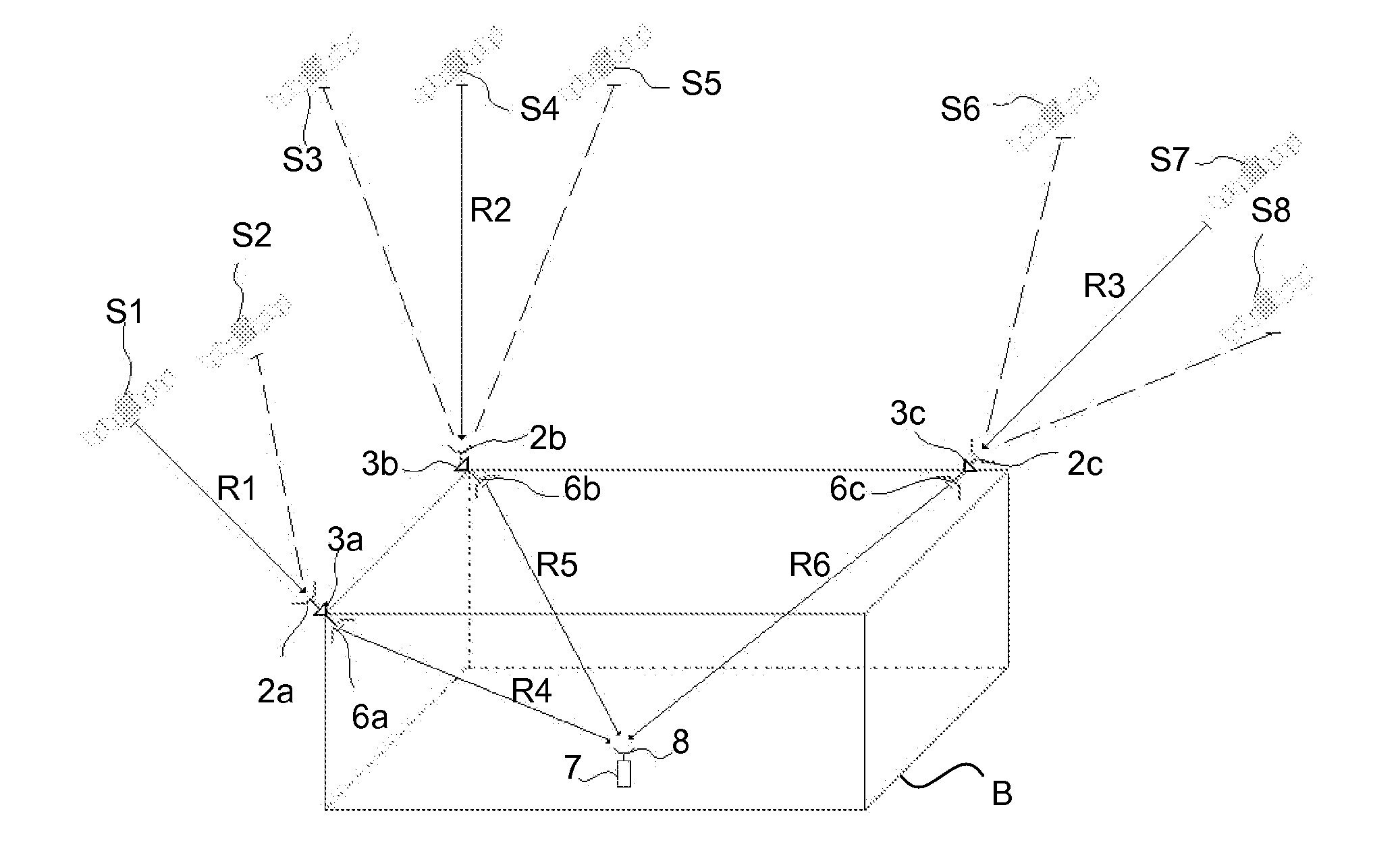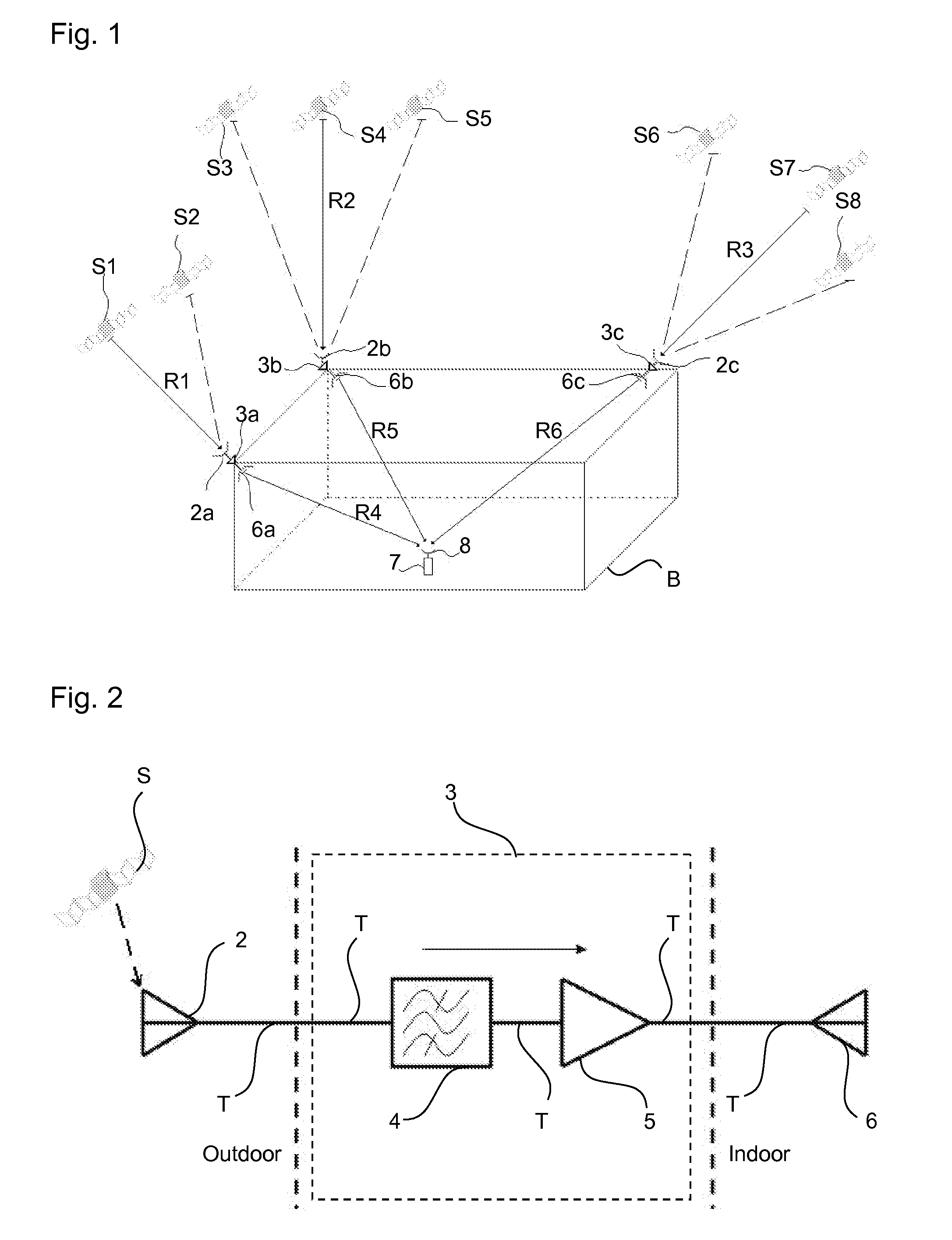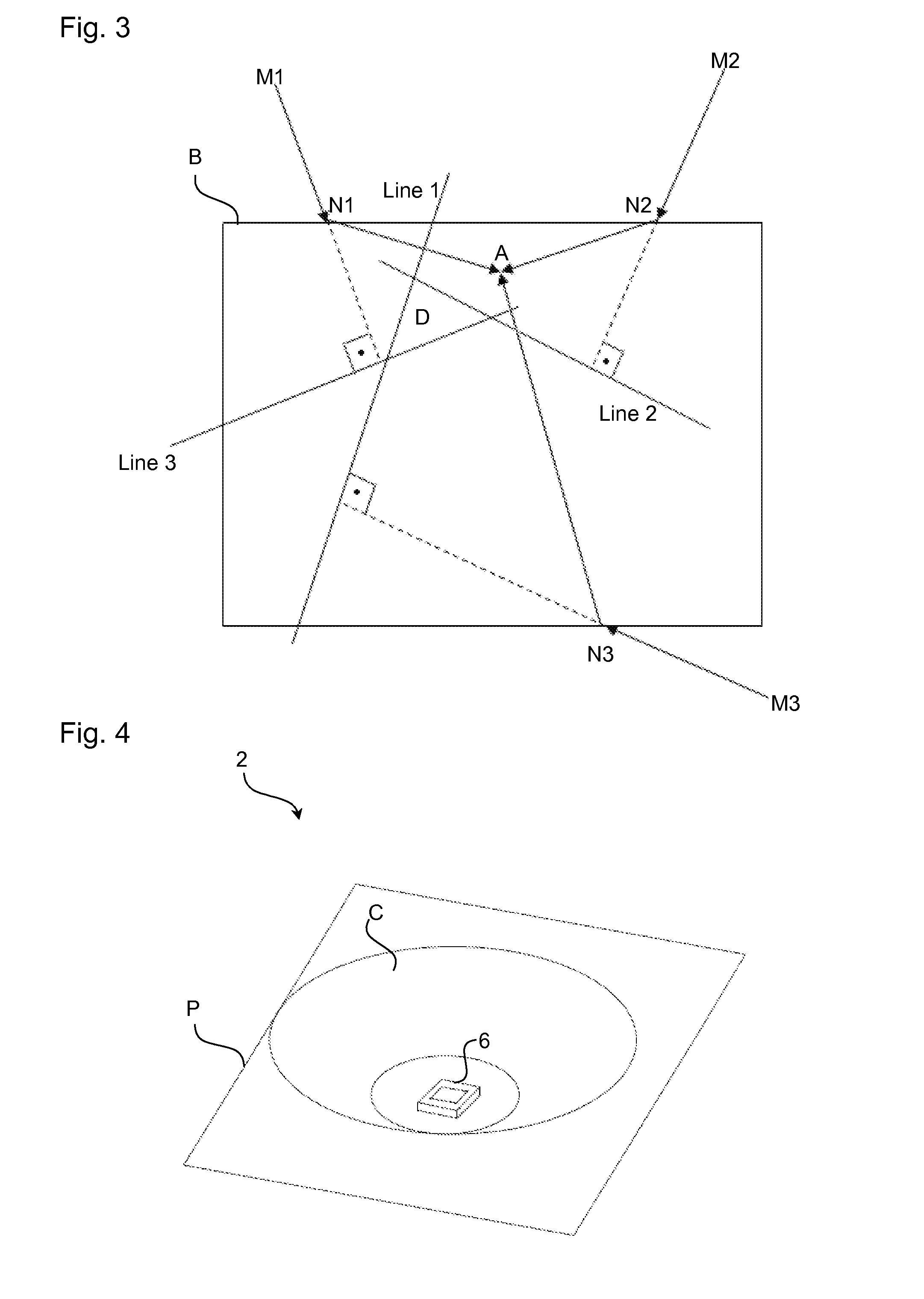Indoor positioning system based on GPS signals and pseudolites with outdoor directional antennas
a positioning system and outdoor technology, applied in waveguide horns, measurement devices, instruments, etc., can solve the problems of signal interference, decrease and the inability of conventional gps receivers to detect outdoor gps signals within buildings, etc., to achieve the effect of increasing the coverage of outdoor gps signals
- Summary
- Abstract
- Description
- Claims
- Application Information
AI Technical Summary
Benefits of technology
Problems solved by technology
Method used
Image
Examples
Embodiment Construction
[0045]Referring to FIG. 1, the indoor positioning system (1) comprises at least three directional GPS antennas (2a, 2b and 2c) for picking up specific GPS signals coming from at least three GPS satellites (S1, S4 and S7), at least three RF GPS repeaters (3a, 3b and 3c) for amplifying GPS signals coming from directional GPS antennas (2a, 2b and 2c), at least three GPS antennas (6a, 6b and 6c) for transmitting GPS signals coming from RF GPS repeaters (3a, 3b and 3c) to indoor, at least one GPS receiver (7) for picking up GPS signals coming from GPS antennas (6a, 6b and 6c) by its (7) antenna (8) and position calculation method (100) for calculating the GPS time and finding positioning in two dimensions.
[0046]If there are three RF GPS repeaters (3) then 2D positioning can be done and GPS time can become available.
[0047]If there are four RF GPS repeaters (3), then 3D positioning can be done and GPS time can become available.
[0048]Referring to FIG. 2, every RF GPS repeaters (3) include a...
PUM
 Login to View More
Login to View More Abstract
Description
Claims
Application Information
 Login to View More
Login to View More - R&D
- Intellectual Property
- Life Sciences
- Materials
- Tech Scout
- Unparalleled Data Quality
- Higher Quality Content
- 60% Fewer Hallucinations
Browse by: Latest US Patents, China's latest patents, Technical Efficacy Thesaurus, Application Domain, Technology Topic, Popular Technical Reports.
© 2025 PatSnap. All rights reserved.Legal|Privacy policy|Modern Slavery Act Transparency Statement|Sitemap|About US| Contact US: help@patsnap.com



